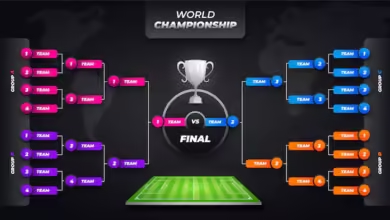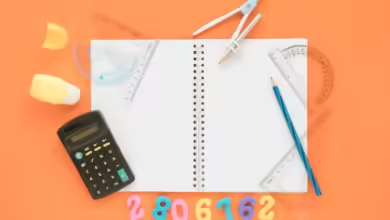Honey i shrunk the kids the tv show makeup testing

Honey, I Shrunk the Kids: The TV Show Makeup Testing
In the world of television, makeup plays a pivotal role in transforming actors into characters and bringing fantasy worlds to life. One notable example of this is the beloved TV series Honey, I Shrunk the Kids: The TV Show, which was based on the 1989 film Honey, I Shrunk the Kids. As fans of the original film recall, the plot revolves around a mad scientist, Wayne Szalinski, who accidentally shrinks his children and their friends to the size of insects. The challenges faced by the miniature characters are not only about survival in a now-gigantic world, but also in convincing the audience that these tiny beings exist within our larger reality.
The makeup effects used to create these tiny characters, along with the giant creatures and objects they interact with, played a significant role in making Honey, I Shrunk the Kids: The TV Show a memorable experience for viewers. Makeup artists employed a combination of techniques to make the minuscule characters believable, while also ensuring the proper transformation of real-world actors into the visually striking figures needed to create a sense of scale.
This article will explore the makeup testing and techniques used on the set of Honey, I Shrunk the Kids: The TV Show. It will delve into the challenges the makeup team faced, the innovative solutions they implemented, and the artistry behind one of the most iconic elements of the show. The process of shrinking, creating fantastical creatures, and the overall success of the makeup department will be the focus, providing an in-depth look at how such complex effects were achieved with both practical and visual means.
The Vision for the Show
Before diving into the makeup testing process, it’s essential to understand the core vision for Honey, I Shrunk the Kids: The TV Show. The series, which aired from 1997 to 2000, followed the same basic premise as the film, with Wayne Szalinski continuing his experiments with his shrink ray and causing various accidental misadventures with his family and their friends.
One of the major challenges in translating the film’s effects into a TV format was the budget and time constraints. The show had to deliver the same level of fantastical effects seen in the movie but within a much tighter timeframe and with fewer resources. This meant the makeup department had to come up with practical effects that were not only effective but cost-efficient. They had to balance the complexity of the effects with the need for rapid production to ensure the show could meet its release schedule.
In essence, the makeup department’s role was to ensure that the shrinking effects, the creation of giant-sized objects, and the interactions with oversized creatures felt believable and consistent throughout each episode. For this, makeup artists had to experiment with various techniques, often relying on traditional, hands-on methods, as well as cutting-edge technology in the visual effects department.
The Challenges of Shrinking Effects
One of the main aspects of the show’s makeup effects was the portrayal of the shrinking characters. While digital effects certainly played a part in some scenes, practical makeup and effects were central to creating the illusion of being smaller than life.
The shrinking process involved multiple challenges. Firstly, the makeup team had to create realistic prosthetics that would give the actors the appearance of being much smaller. This required the design and application of detailed, textured prosthetics that could simulate the appearance of tiny, fragile beings, without looking cartoonish or unrealistic. The makeup had to seamlessly blend with the actors’ performances to maintain immersion in the story.
Additionally, the actors’ costumes had to be modified for the tiny characters. The clothing, which appeared normal on a full-sized person, had to be altered or replaced to create a scale that matched the miniature characters’ new size. This often involved using smaller, specialized versions of standard clothing items, or sometimes reworking fabric materials to give the illusion of being made from a different material when scaled down.
The makeup testing process for shrinking involved working closely with the art department to ensure the textures and colors on the prosthetics matched the visual effects. For example, if the characters were shrunk and interacting with grass, the makeup needed to reflect the same color palette as the oversized surroundings, blending seamlessly into the environment.
Creating Giant Creatures and Objects
While shrinking the human characters was a significant part of the show, the other half of the magic came from making the world around them seem enormous. In order to create this illusion, the makeup department needed to work on practical elements such as insects, rodents, and plants, all of which needed to appear far larger than life.
One of the most iconic scenes from Honey, I Shrunk the Kids: The TV Show involved the characters interacting with a variety of bugs and insects, such as ants, spiders, and grasshoppers. To create these creatures, the makeup team had to work with both practical animatronics and special effects makeup to make the insects appear life-sized. These giant bugs had to be both functional and realistic, as they interacted with the human-sized characters in various ways.
For instance, giant ants were created using intricate puppetry and animatronic techniques, but their faces and body parts also had to be augmented with makeup to make them more convincing. The makeup artists used silicone and latex prosthetics to form the texture of insect exoskeletons, ensuring that the final result would appear alive and moving when combined with the animatronics.
The team also worked to create the illusion of a larger-than-life world by applying makeup to trees, flowers, and other plant life. These plants were often enlarged using a combination of oversized props, makeup, and visual effects to give the audience the impression that the world around the characters had been distorted.
The makeup department had to ensure that all of these elements – from bugs to plants – maintained continuity throughout the series, as the miniature world could change in scale and perspective. Makeup tests were done before each scene, often on a smaller scale, to ensure that the colors, textures, and sizes matched the overall aesthetic of the world the characters inhabited.
Testing and Refining Techniques
The makeup testing process for Honey, I Shrunk the Kids: The TV Show involved extensive trial and error. Since the show often blended live-action sequences with visual effects, it was important to test how well the practical makeup elements would interact with the digital effects.
One of the first steps in the testing process was to develop a series of different shrinking techniques. The team tested prosthetics, masks, and even body suits to achieve the desired effect. This process involved trial fittings and makeup tests on actors to determine which prosthetics looked most natural on-screen while maintaining comfort for the performers.
Testing also included the use of different makeup textures and materials. For example, various types of latex, silicone, and foam were tested to create realistic skin and body textures for the tiny characters. Some tests focused on making sure the makeup would hold up under hot stage lights or during strenuous physical activities on set.
Additionally, tests were performed with the oversized props and creatures. Makeup artists had to ensure that the prosthetics used on the giant insects and plants would stand up to the rigorous demands of filming while also appearing visually impressive when seen in close-up shots.
Once a certain technique was developed, the team would refine it through multiple tests to ensure consistency throughout the entire series. The makeup department worked closely with the visual effects team to make sure that the two departments were aligned in their approach. Together, they managed to create a seamless experience where practical effects and digital effects were interwoven.
The Impact of Makeup in Storytelling
The makeup effects in Honey, I Shrunk the Kids: The TV Show were not just tools for creating a fantastical world; they were essential to the show’s storytelling. The makeup played a key role in creating tension, humor, and emotion throughout the series.
For instance, the shrinking process often led to situations where the characters were at the mercy of their environment. The makeup work on bugs and giant animals emphasized the scale of the danger the characters faced. Without convincing makeup effects, these moments would have lost much of their impact.
Similarly, the makeup for the human characters had to reflect their change in size, from their expressions to the way they interacted with the environment. Whether it was the exaggerated movements needed to show how the characters navigated the giant world around them or the close-up shots of their miniature features, the makeup added depth and realism to the characters’ journeys.
Conclusion
The makeup testing and techniques behind Honey, I Shrunk the Kids: The TV Show were integral to the success of the series. The show’s ability to convey a world of miniature characters, giant creatures, and fantastical elements was largely due to the creative efforts of the makeup team. Through a combination of prosthetics, animatronics, and careful design, they helped bring the shrinking adventure to life on-screen, delighting audiences with an innovative blend of practical and digital effects.
The testing process involved significant trial and error, with the makeup team constantly refining their techniques to create the best possible effects for the series. The result was a memorable television experience that captured the imagination of viewers, not just through its storytelling, but through its groundbreaking makeup and special effects work.



